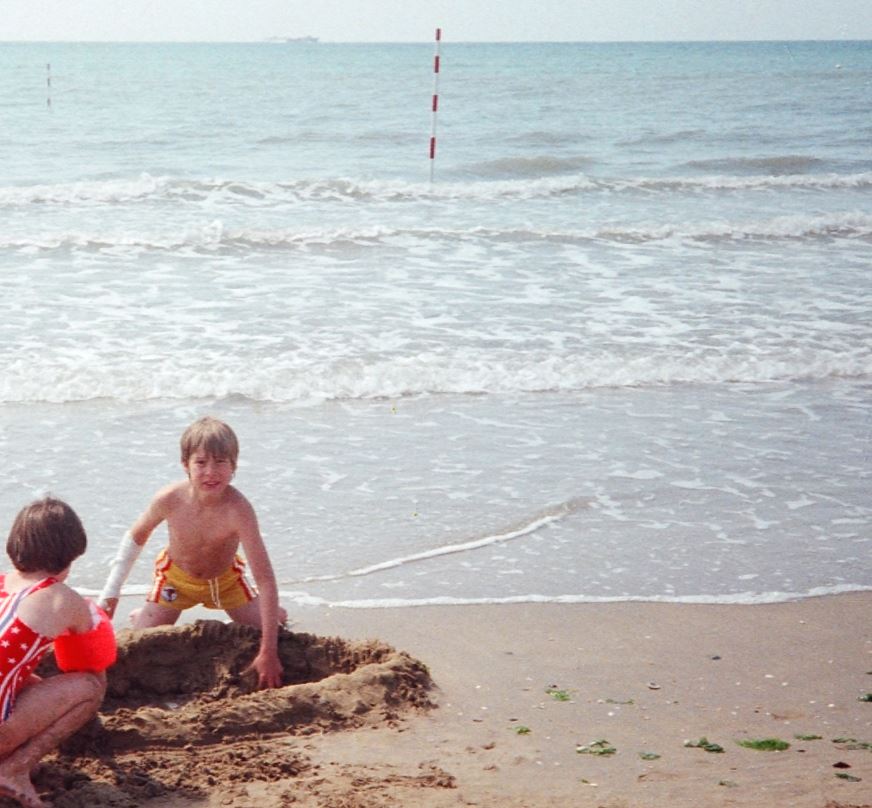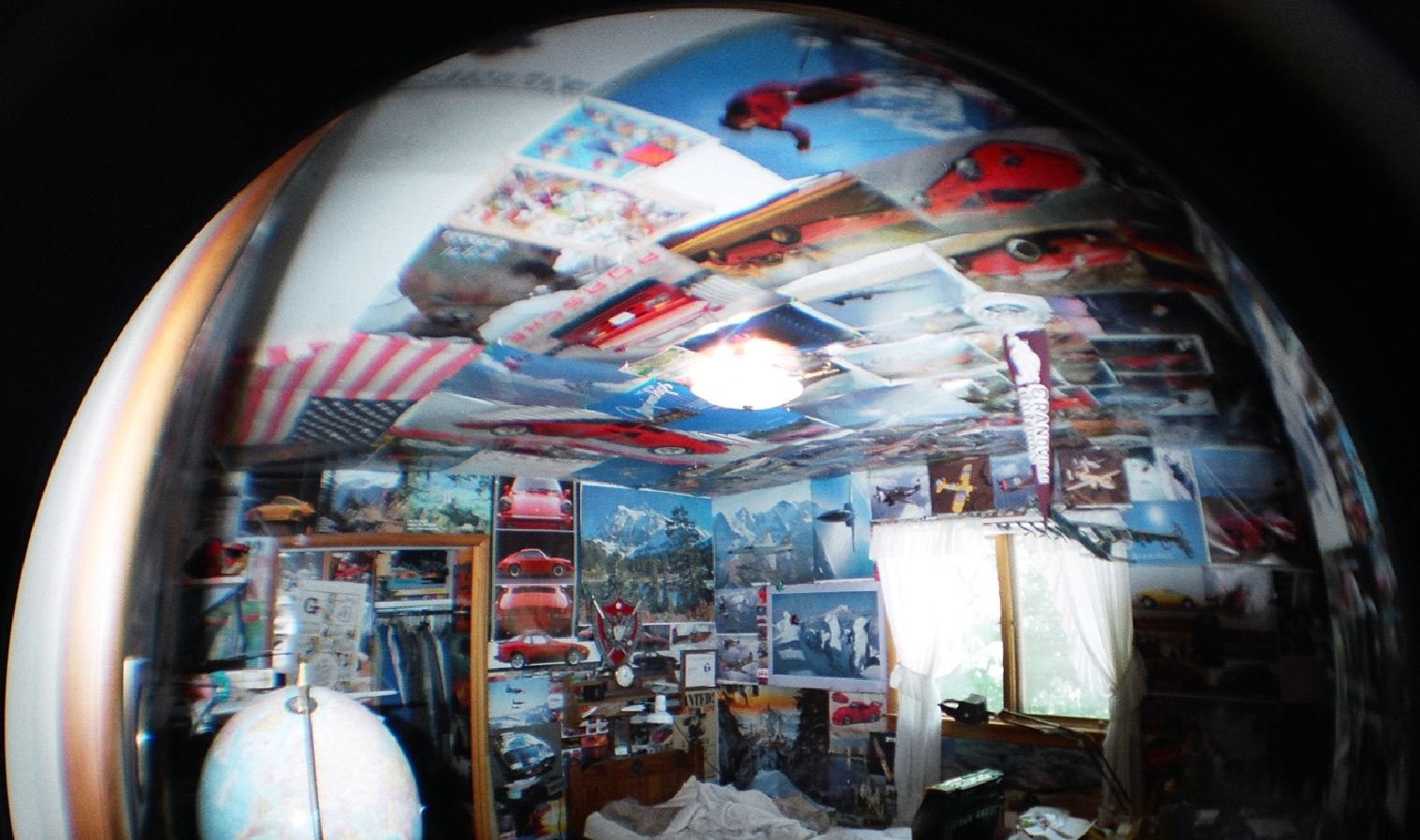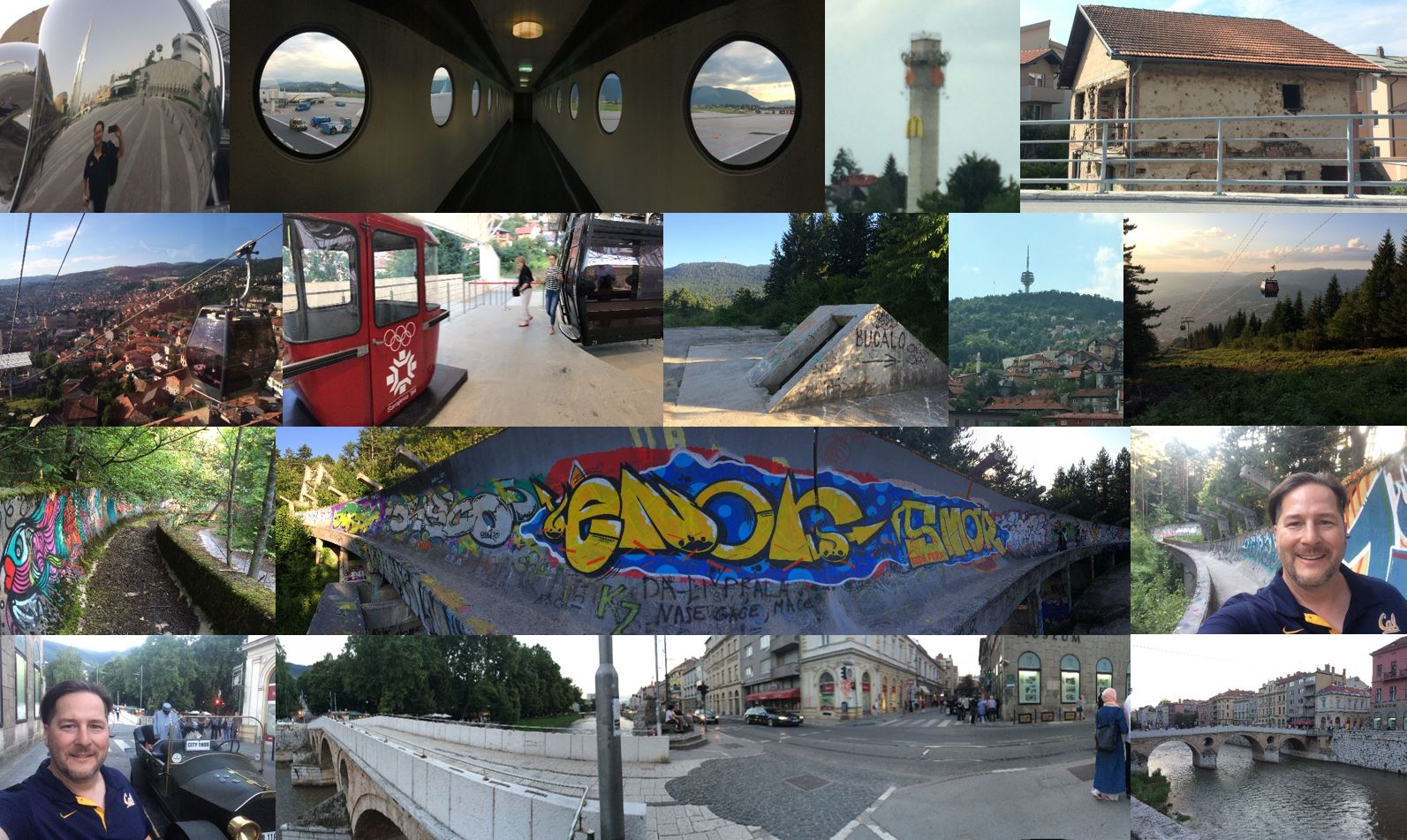Around the world in forty years
They say you shouldn’t post to social media at 3 am, but while I’m jet-lagged in the wide-awake position in my hotel room in Sarajevo, I thought I’d upload a couple of photos (recognizing that I may be blurring the line between nostalgic introspection and gratuitous sappiness).
Photo #1 is a shot from the Adriatic Sea in Yugoslavia, where I tried my hand (at least the one that wasn’t broken) at building dams and diversions 40 years ago:
#2 is from my teenage bedroom in Michigan a few years later; what strikes me about this photo today is the little pieces of paper that you can barely see taped to the globe. This was before the term “bucket list” even existed, but I remember making myself a list of life goals – one of which was a ’round-the-world trip that I traced around my globe with tape and string.
Well, it may have taken me forty years since that day on the Yugoslavian coast, but if I had carried a really, really big ball of string around with me from that day forward, it would now have finally come around full circle; since I got here from the east this time around, as of today I have officially been around the world!
Given the setting, though, this one does come with a fair degree of mixed emotions…which brings me to photo #3:
My hosts here took me to the newly rebuilt Mount Trebević gondola, which originally carted athletes and spectators up to the Olympic venues before it was destroyed in the Bosnian war. For over twenty years, the wreckage of its predecessor served as a very visible scar of the war, reminding Sarajevo’s residents of their Olympic heyday and of the pre-war weekends when they used to be able to ride the gondola straight from the city up the mountain for a picnic. Given the excitement I could see on the other faces standing in the long line to buy tickets, to be able to do that again today is a dream come true for many of the old-timers in particular.
Looking down at the city from the vantage point of Trebević is a surreal experience: In one panoramic view, you can see the street corner where a gunshot sparked a century of warfare and global conflict; you can see the ruins of the concrete stands where crowds cheered on the winter Olympians; you can see old bunkers where soldiers hid from overhead bombs after lobbing mortar shells into market places full of civilians; you can see the positions from which snipers used to indiscriminately take out pedestrians in the city; and in real time you can watch mountain bikers and long-boarders rig GoPros to their helmets and shoot down the abandoned bobsled track while streaming it live.
When I was in Yugoslavia as a kid, I could never have imagined that entire cities in the region would be destroyed and rebuilt before I would have a chance to return – with the Balkans carved up into a whole new map. Who could have known that the kids I played with on the beach that day back in the 70s would each get drawn into one side or another of the brutal conflict, and that a whole new generation of kids would face images and scenes that hadn’t been seen in Europe since the collapse of the Nazi regime?
When I first saw a musician named Kurt Bestor perform his tragic but hopeful song Prayer of the Children in concert back when I was in college – while the Bosnian War was still raging – its message about the children of Sarajevo really haunted me.
In the lyrics, kids try to make sense of “angry guns in a shattered world”. Staring down at the city from Trebević, the story behind the song makes you realize that a fragile peace can erupt into an all-out incineration in a heartbeat. But at the same time, the competing message that I got from meeting the people in my class and from seeing the beautiful city from the hill today is that no matter how deep the hole, no matter how shattered the world seems, you can reconcile, you can overcome; you can rebuild.
But it doesn’t happen on its own; in fact, it wouldn’t happen at all without dreamers and visionaries like Sarajevo’s newest honorary citizen, Edmond Offerman, who honored his Sarajevo-born wife by donating a dismantled ski lift to the city to help resurrect its past. Read the story here. Edmond and his wife could have bought a yacht or a Bentley or a private country club with their money; but instead, they decided to turn some wreckage that had stood idle on a hill for so many years into a beacon of hope dedicated to the people of Sarajevo.
My efforts to help kick off some flood fighting projects here may be tied into preventing a different kind of devastation than that brought on by war, but the funding programs that brought me here likewise represent an investment in the future that I hope will continue to grow as well. More on the work with the Hydro-Engineering Institute Sarajevo here.
When we moved to Australia almost ten years ago, the first stanza of a song that Jimmy Buffet borrowed from Steven Stills really struck me every time I’d look up at the sky:
When you see the Southern Cross for the first time,
You understand now why you came this way,
‘Cause the truth you might be runnin’ from is so small,
But it’s as big as the promise, the promise of a comin’ day!
Well, the globe sure seemed to shrink for me today; and while a lot of the things on my original bucket list remain unchecked, at least I finally get to knock off this particularly elusive goal! So today I get to celebrate the chorus:
Think about how many times I have fallen
Spirits are using me, larger voices callin’
What Heaven brought you and me cannot be forgotten
I have been around the world!
- Layover in Dubai – with the world’s tallest building, Sarajevo Airport, Olympic rings over the abandoned figure skating venue, shot-up house
- Gondola leaving the city, original and new cable cars, bunker, bombed-out TV tower, gondola leaving Trebević
- Abandoned bobsled track from ’84 Olympics
- Street corner where Franz Ferdinand and his wife were assassinated, sparking World War 1
Next stop: Fighting tsunamis in Munich!




